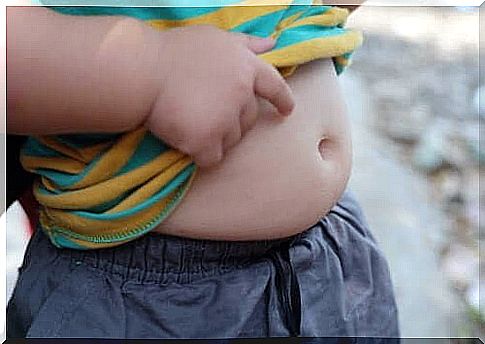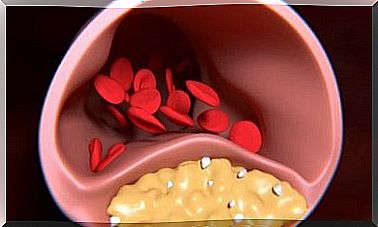Childhood Obesity Is A Serious Problem

Childhood obesity is currently one of the most serious health problems in the population. It is a phenomenon that occurs globally, regardless of location, and which, unfortunately, is only slowly increasing in prevalence.
Childhood obesity is, in fact, a pathology that is often associated only with industrialized, developed countries. However, it also affects many smaller and developing countries. Unfortunately, statistics also show the severity and prevalence of the phenomenon, with an estimated 42 million children under the age of 5 worldwide suffering from childhood obesity.
Obesity is a disease that is not limited to its aesthetic aspect but also has serious adverse effects on the health of a person suffering from obesity. For example, children who suffer from obesity as early as childhood are also more likely to suffer from other diseases, such as diabetes or other cardiovascular diseases later in life.
It would seem that in the society we live in, it is difficult for children to maintain a healthy lifestyle and eat right and balanced. Therefore, as responsible adults, we should do something about it and strive to reduce and prevent this phenomenon that threatens the health of the child as effectively as possible. This is why we want to tell you in this article where childhood obesity is caused, how it is identified and how it can be prevented.
What does childhood obesity consist of?

Childhood obesity is the most common nutritional disorder at this stage of life. It consists of excessive accumulation of fat in the body, as a result of which the complications and diseases caused by obesity can, in the worst case, even endanger the health of the child.
It is a disease that involves many factors, i.e., nutrition is not always the only contributing factor that leads to obesity. We know today that, in addition to nutrition, genetics and physical activity are two key factors worth mentioning that can make a significant contribution to the development of obesity as early as childhood.
However, it is clear that the food we eat is one of the biggest culprits in this pathology. In today’s society, we use far too many unnecessary (and excessive) calorie foods that, on top of all that, contain a huge amount of saturated fats that are harmful to the body.
In conclusion, we could say that childhood obesity is a combination of, among other things, a very unbalanced diet, a passive lifestyle and genetics. In addition, it is important to understand, and as we mentioned at the beginning of this article, childhood obesity is significantly associated with numerous later-age health problems, such as diabetes, high cholesterol, and other cardiovascular diseases.
How can we know that a child is obese?
Children’s obesity diagnosis can not be confirmed on the basis of mere appearance, but it is calculated parameter, which is called the body’s body mass index, or BMI-counter, ( eng. Body mass index) . BMI describes the ratio of weight to length and is calculated by dividing weight (in kilograms) by squaring the length (in meters), i.e., raising to another power. This squaring helps to smooth the result so that it is the same for everyone, no matter how long or short the person himself, as weight cannot be divided by mere length, because the result would then not be equal for everyone.
Today, we have a wide range of tables and references in our hands that allow us to compare a child’s body mass index to a standard of the same age and size in cases where a child is suspected of suffering from obesity. In the case of children, however, for a more accurate outcome, it is better to use percentage curves to make a comparison.
What risk factors predispose childhood to obesity?
As we have said before, childhood obesity does not depend solely on a child’s diet. In fact, it involves several different factors, such as:
- Genetics: Numerous studies have found an association between parental overweight and overweight in children. Indeed, these studies have found that in cases where parents are obese, a child is also nearly three times more likely to be obese than a child from a normal- weight family. However, it is difficult to distinguish whether this phenomenon is due to a common lifestyle (such as a passive lifestyle, lack of exercise, and an unhealthy diet) or genetics.
- Birth weight of a child: Many researchers have found an interesting association that a baby weighing more than 4 pounds at birth is at a higher risk of developing obesity during childhood or adulthood at the latest.
- Breastfeeding in the first year of a baby: Interestingly, breastfeeding a baby during her first year of life seems to be associated with a lower risk of suffering from childhood obesity.
- Child’s place of birth: While a child living in a more active environment in rural areas would appear to maintain a more active lifestyle, children growing up in cities, on the other hand, would appear to be more prone to a passive lifestyle and thus at higher risk of childhood obesity.
As we can see, childhood obesity is associated with many other factors in addition to nutrition. In addition to the factors mentioned above, the quality of sleep and the financial level of the family also seem to affect the child’s weight. However, we need to understand clearly that in order to solve this problem, we need to pay close attention specifically to the child’s lifestyle.

What can we do to prevent childhood obesity?
Childhood obesity is a serious illness that can even determine the rest of a child’s life. This is because, in addition to low self-esteem and aesthetic problems caused by obesity, it means a significantly increased risk of cardiovascular disease and metabolic disorders.
That is why it is essential that we act as soon as possible and actively look for different ways to build the right kind of nutrition for the little ones in the family. If you have any questions or concerns about nutrition, you should also consult your doctor or nutritionist to help parents build a healthier and more balanced diet for their child, while providing all the nutrients needed for their growth and development.
Also, what would be best for the child to stay active. Incorporating sport into your daily routine should be one of the first steps. In fact, the sports practiced in the group also help the child to improve their social skills and enjoy the exercise to the fullest.









